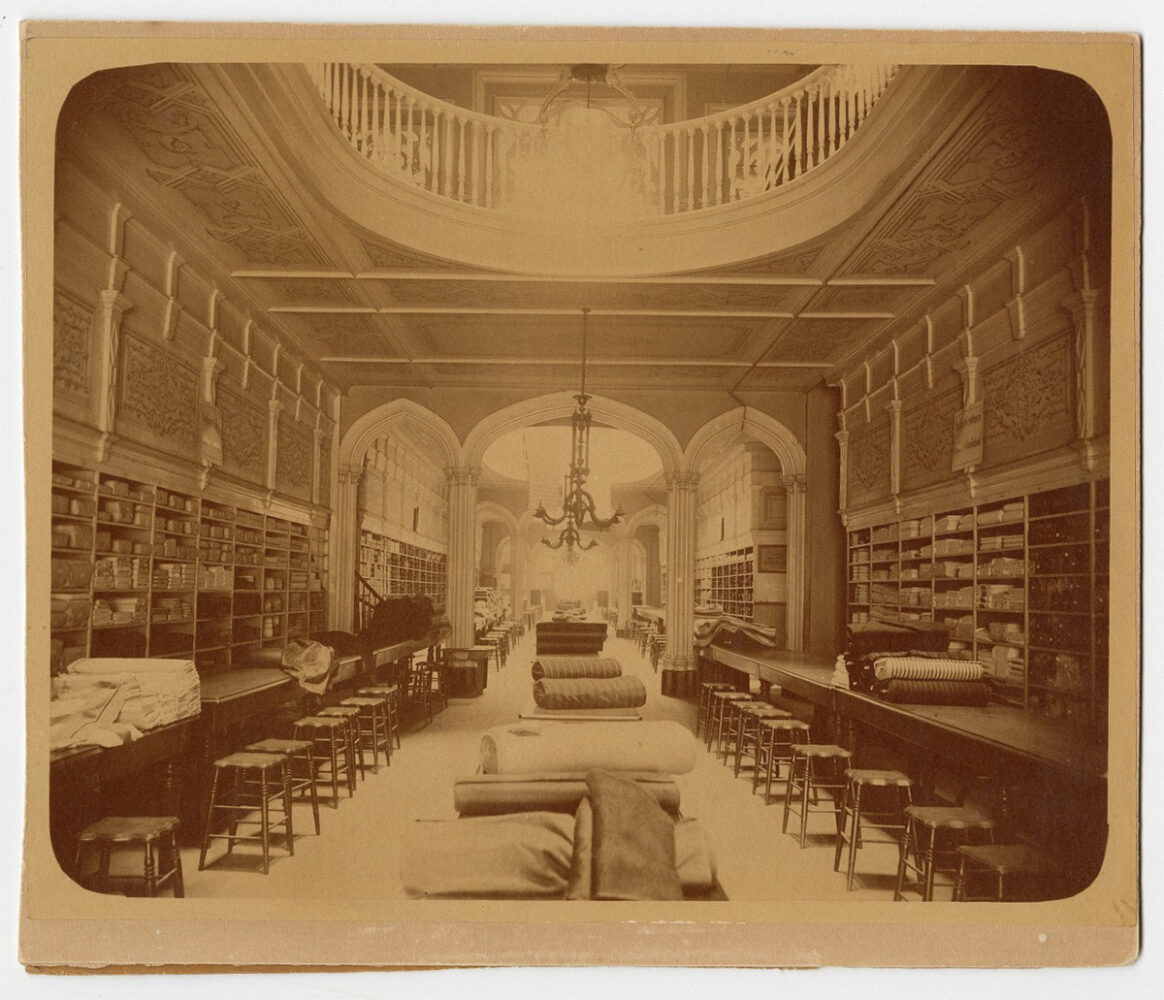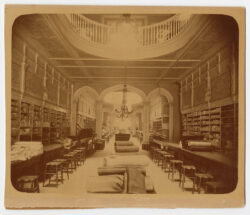D. H. Holmes
For one hundred forty years, D. H. Holmes served as a shopping destination for generations of New Orleanians, growing from a small dry goods shop to an enormous consumer emporium.

The Historic New Orleans Collection
Interior of D. H. Holmes Canal Street, ca. 1882–1887.
Department store D. H. Holmes anchored the Canal Street shopping district for one hundred forty years, serving as a shopping destination for generations of New Orleanians. The business grew from a small dry goods shop on Chartres Street to a consumer emporium boasting its status as the largest store in the South. The department store closed in 1989, bought out by Dillard’s.
Daniel Henry Holmes was born in Ohio in 1816 and began working for Eugene Levassor, a French dry goods merchant in Cincinnati, at thirteen. By 1840 Holmes was in New Orleans and established his own store at the corner of Chartres and Customhouse (now Iberville) Streets, where the French language he learned under his first employer came in handy with Creole customers. In 1849 the growing business moved into a large new building on Canal Street, the first major shopping establishment on what was to become the shopping avenue of the South. Over the next three decades, D. H. Holmes steadily expanded through several buildings, with entrances on Canal, Dauphine, Bourbon, and Customhouse (now Iberville) Streets.
Holmes led the local market by importing fabrics. In 1852 he established a purchasing office in New York to reach international merchants. During the Civil War, he spent time in Europe traveling from his home in Paris to textile factories in France, Austria, and Great Britain. In 1872, three years after the completion of the first transcontinental railroad, Holmes advertised “New and Choice Goods from China,” received by steamship in San Francisco and then transported on the Union Pacific Railroad to the store on Canal Street.
Shopping at D. H. Holmes was as much entertainment as a necessity. The early store was lined with shopping counters, where customers would sit on brass stools and be served by bilingual (Holmes preferred his employees to speak both English and French) salesmen and women who pulled goods from tall shelves behind the counter. The consumer palace was decorated with Gothic arches and Moresque swirls. As shopping practices and styles changed, the store lost its long counters in favor of mannequin and serve-yourself merchandise displays. D. H. Holmes was largely segregated through most of its history. The segregation was not always explicit, but customers of color were made to feel extremely unwelcome in the shopping salon on Canal Street.
Holmes died at his New York residence in 1898. In 1934 his store was one of the first to register as a publicly held company. In 1955 the store opened a second location in Baton Rouge. Twenty-five years later, there were thirteen stores across the Gulf South. Its retail operations peaked in 1983 with profits of $10.2 million. Arkansas-based Dillard’s bought out the company in 1989, including nineteen department stores and two bargain centers in Alabama, Florida, Louisiana, and Mississippi. The flagship store on Canal Street closed soon after, to local dismay. Today the building is home to a Hyatt hotel.
